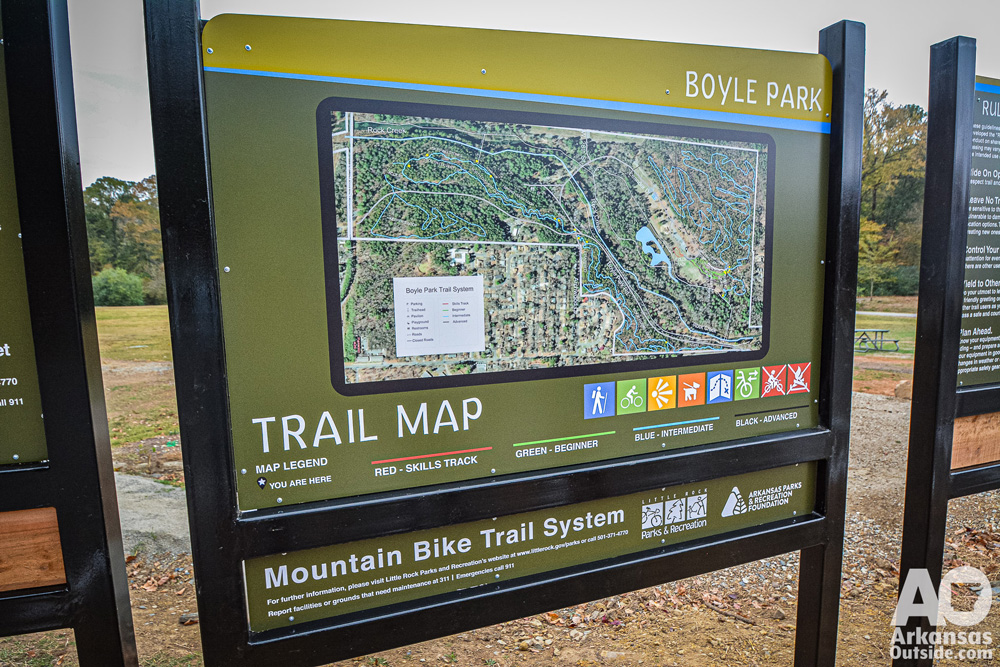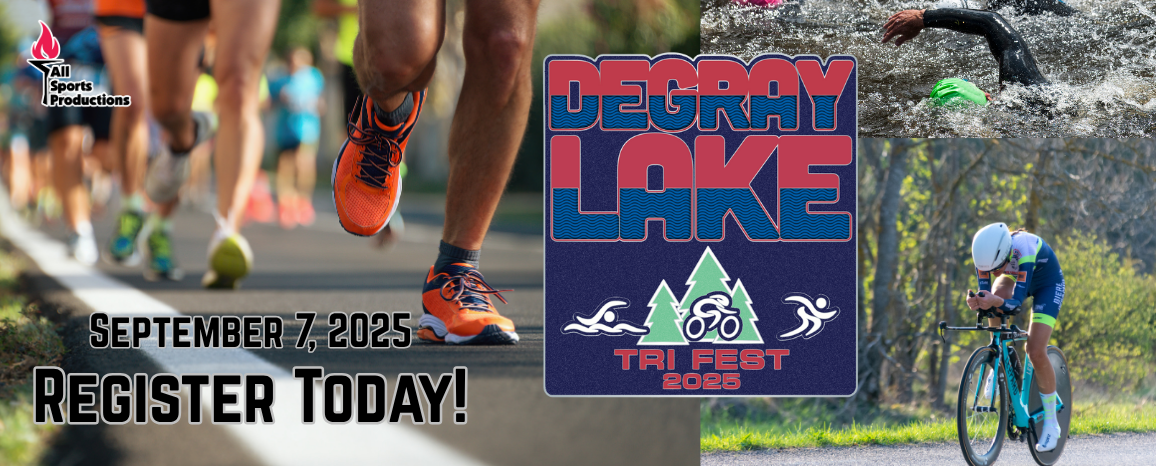City officials, outdoor enthusiasts, and local media gathered at Little Rock’s Boyle Park to celebrate a new chapter for one of the city’s oldest parks. At a ribbon-cutting ceremony, Little Rock Mayor Frank Scott Jr. highlighted the collaborative effort behind the park’s latest upgrades. “We’re always working to listen to the community, and we’re grateful not only to make the promise but to keep the promise,” he said.

Located in one of Little Rock’s most expansive green spaces, Boyle Park now boasts more than 3 miles of new mountain biking trails and a dedicated bike skills park, in addition to a revamped playground equipped with accessible features for kids of all ages and abilities. Funded through an Outdoor Recreation Grant, these enhancements reflect a citywide commitment to offering high-quality recreational spaces for residents and visitors alike.

It started with Volunteerism
For decades, Boyle Park has been a haven for hiking and mountain biking, yet major trail improvements began only about ten years ago when the Central Arkansas Trail Alliance (CATA) stepped in. CATA, a volunteer nonprofit and chapter of the International Mountain Bicycling Association, transformed a patchwork of short trails into a cohesive 4.5-mile loop, now known as “Grilled.” The trail’s name honors a historic built-in grill discovered along the route. Through countless volunteer hours, CATA connected the original trails and collaborated with the city to remove invasive privet around the park’s fishing pond. They also joined forces with Keep Little Rock Beautiful to organize park clean-up events and even helped spread gravel on an older playground.

Images courtesy of Greg Jones.
Safety concerns emerged following CATA’s Big Rock Mountain Bike Festival, highlighting issues along Leander Road, which connects the Leander neighborhood to Pavilion 3’s parking area. After recognizing the potential risks for park visitors, CATA partnered with the neighborhood and city officials to successfully close the road to improve safety.
CATA’s ongoing partnership with the city and Little Rock Parks and Recreation has been instrumental in transforming Boyle Park. Little Rock Parks Director Leland Couch, inspired by CATA’s commitment, began actively pursuing grants and funding to help realize the community’s vision for Boyle Park as a premier destination for outdoor recreation within the city.

CATA continues to maintain the trails and also leads a night ride every other Monday night to explore the trails. Bring lights, water, a helmet, and a sense of adventure. No one knows the trails like the CATA leaders.
Mayor Frank Scott Jr. emphasized the critical role of community support in making the recent upgrades to Boyle Park possible. “This happened because voters said yes to a property tax millage, and our team worked with state and federal grants to bring this to fruition,” he explained. Much of the recent development was funded through two major grants secured by Little Rock Parks and Recreation.
The first, a Recreational Trails Program (RTP) grant, supported the new trails and came from federal funds administered by the Arkansas Department of Transportation. With an 80/20 funding structure, the city was responsible for only 20% of the project’s costs. The second grant, awarded by the Arkansas Office of Outdoor Recreation, provided matching funds on a 50/50 basis, covering half the cost of the new playground equipment.

An Historic Park
In the 1930s, under President Franklin D. Roosevelt’s New Deal, the Civilian Conservation Corps (CCC) was established. Nicknamed the “Tree Army,” the CCC provided jobs and vocational training to men during the Great Depression while also building infrastructure in natural areas that would later become some of America’s most cherished parks. In Arkansas, the CCC’s legacy endures in preserved cabins, lodges, dams, and trails at sites like Devil’s Den State Park, Petit Jean State Park, Buffalo Point on the Buffalo National River, and White Rock Mountain in the Ozark National Forest.
After completing projects at Devil’s Den, CCC Company 3777 turned their efforts to a then-rural area west of Little Rock known as Boyle Park, where they constructed bridges, pavilions, and trails. They later moved on to what is now Lake Catherine State Park. Today, Boyle Park sits centrally in Little Rock’s midtown, a reminder of the CCC’s work, though much of its original infrastructure has been worn down by time, with paved trails and other amenities eroding over the decades.

Years ago, newer trails were added on Boyle Park’s western side and in smaller sections on the eastern edge. These trails once welcomed mountain bikers, from beginner women’s classes to after-work riders looking for a quick evening ride. However, as mountain biking gained momentum at Burns Park in North Little Rock, Camp Robinson, and Pinnacle Mountain State Park, Boyle Park’s trails began to fade from memory.
Not Just Boyle
There is a much bigger vision at work here. When you walk into the Parks and Recreation offices at City Hall, there is a sign above the reception desk that says, “A City in a Park.” One of the major projects to make that phrase a reality is the Tri-Creek Greenway system.
The City of Little Rock is moving forward with plans to develop an off-street bicycle and pedestrian corridor in the city’s core. While the Arkansas River Trail offers a valuable recreation space, it remains inaccessible to some residents, especially those who cannot easily transport themselves or their bikes to the trail. Additionally, its use as a transportation route is limited, as it only serves residents whose homes or destinations lie directly along its path and who feel comfortable navigating on-street connections.
The proposed Tri-Creek Greenway aims to bridge this gap by creating a more accessible, 6-mile-long, 12-foot-wide corridor dedicated to transportation and recreation. Utilizing existing paved trails in Boyle Park and along I-630, the Tri-Creek Greenway will provide Little Rock residents with an off-street route for both commuting and leisure, expanding safe and comfortable active transportation options for more of the city’s population.

This greenway will connect War Memorial, Kanis, Boyle, First Tee, Western Hills, and Hindman Parks. It also connects the residential neighborhoods along this corridor to schools, businesses, medical care, and more for those who use active transportation to move around the city.
The Future of Parks
As the ceremony wrapped up, Jeff Gannon of Affordable Trail Solutions was loading up the last of his equipment to move over to his next project for the city, Allsopp Park North, where he will be improving the trail system for hikers, runners, and mountain bikers. Work is slated to start in the next week, again funded by an RTP grant. According to Director Couch, a walking/biking loop is planned to be built soon at Western Hills Park to complement the new playground and restrooms the city recently installed at the park. Community input meetings have also taken place at Hindman Park to help with decision-making on new and improved features at that park.
While the city has been aggressive with grant applications, some of the projects are big and will require additional funding and matching funds. This includes implementing a badly needed master plan for War Memorial Park. The two current sales tax proposals would make these improvements possible. Here is the plan for City Parks. These parks and our active transportation infrastructure are a major factor in the quality of life for the people of Little Rock.
With fresh trails and new skills amenities, Boyle Park is set to become an even more popular destination for riders, families, and adventurers. You can view an interactive map including the new trails below.
a






